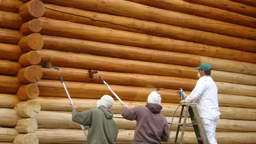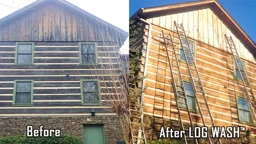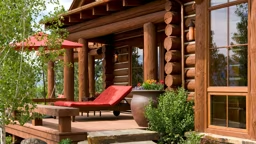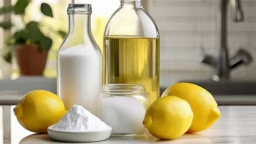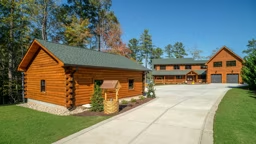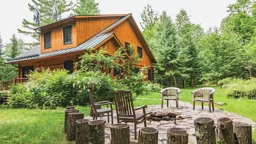
Image by user32212 from Pixabay
1. Air- and Kiln-Drying the Logs
Because water inside the wood can support a host of harmful organisms, the first step log home producers take is to reduce the moisture content of the logs. They may air-dry the wood for up to a year or more, heat the logs in huge kilns or use a combination of air- and kiln-drying.
Kilns remove excess moisture by circulating hot air around the logs. Some of the advantages of kiln-drying are:
- The kiln-dried logs are more uniform, and will settle less.
- Kiln-drying cuts down on log checking (cracking).
- The heat from the kiln will eliminate insects, larvae, or fungi.
- Kiln-drying will crystallize pitch (sap) in the wood, preventing it from seeping to the surface years down the road.
- Logs that have been kiln-dried will be lighter and more manageable during construction.
2. Borate Wood Treatments
Some log home producers also protect the wood from insects and fungi by dipping logs in tanks filled with a borate-based solution or infusing them with a borate preservative through pressure treating. Borate is an eco-friendly and economical way to protect your logs. Borate powder is mined from the earth, and can be applied by either mixing with water to apply to large areas or dusted into cracks and crevices. Logs treated with borate are resistant to termites carpenter ants, beetles, and are considered fungi-resistant. Borates are odorless, non-corrosive, and easy to apply.
Learn more: Warding Off Log Home Pests
3. Cleaning the Logs
Once the logs are assembled at your home site, they should be treated with a cleaning solution to remove mill glaze, road grime, mud and dirt accumulated during construction. Each of these substances can prevent preservatives and finishes from adhering to the wood.
Learn more: How to Protect Your Log Home's Wood
4. Applying a Wood Preservative
The next treatment your logs will receive after cleaning will likely be the application of a wood preservative. The most important role of a preservative is to repel your logs' primary enemy: water.
Water promotes mold and mildew and attracts fungi and insects—all of which can break down the wood. Normally, preservatives are applied to your logs every three to five years. But the maintenance schedule varies, depending on factors such as the climate in the region you're building and the specific preservative you select. (Important: You need to apply preservatives that are specifically formulated for log homes.)
Learn more: Take a look at Log Home Living's guide to companies specializing in log home wood treatment products.
5. Biocides
To protect against fungi, mold, mildew and insects, some manufacturers add chemicals called biocides to their wood preservatives. Although these agents are safe for humans and animals, they kill the organisms that feed on wood.

and includes a UV Boost additive.
6. Pigmented Stains to Combat Damage from UV Rays
Manufacturers offer sunblock and pigmented preservatives to mitigate the damaging effects of the sun's ultraviolet rays. Some tips for applying stains to your log home:
- Stains should be applied early in the construction process— usually once the roof is completed and the trim boards have been installed.
- Always apply stains before applying a clear topcoat. While the stain protects the wood from UV rays, the topcoat protects the stain.
- The darker the stain, the more it will protect your logs from UV rays.
7. Topcoats and Finish Coatings
Depending on which product line you use, you may have to spread on a final finish coat after applying the wood preservative or stain. It's worth it: This finish coat will reflect ultraviolet rays and add another layer of water repellency.




